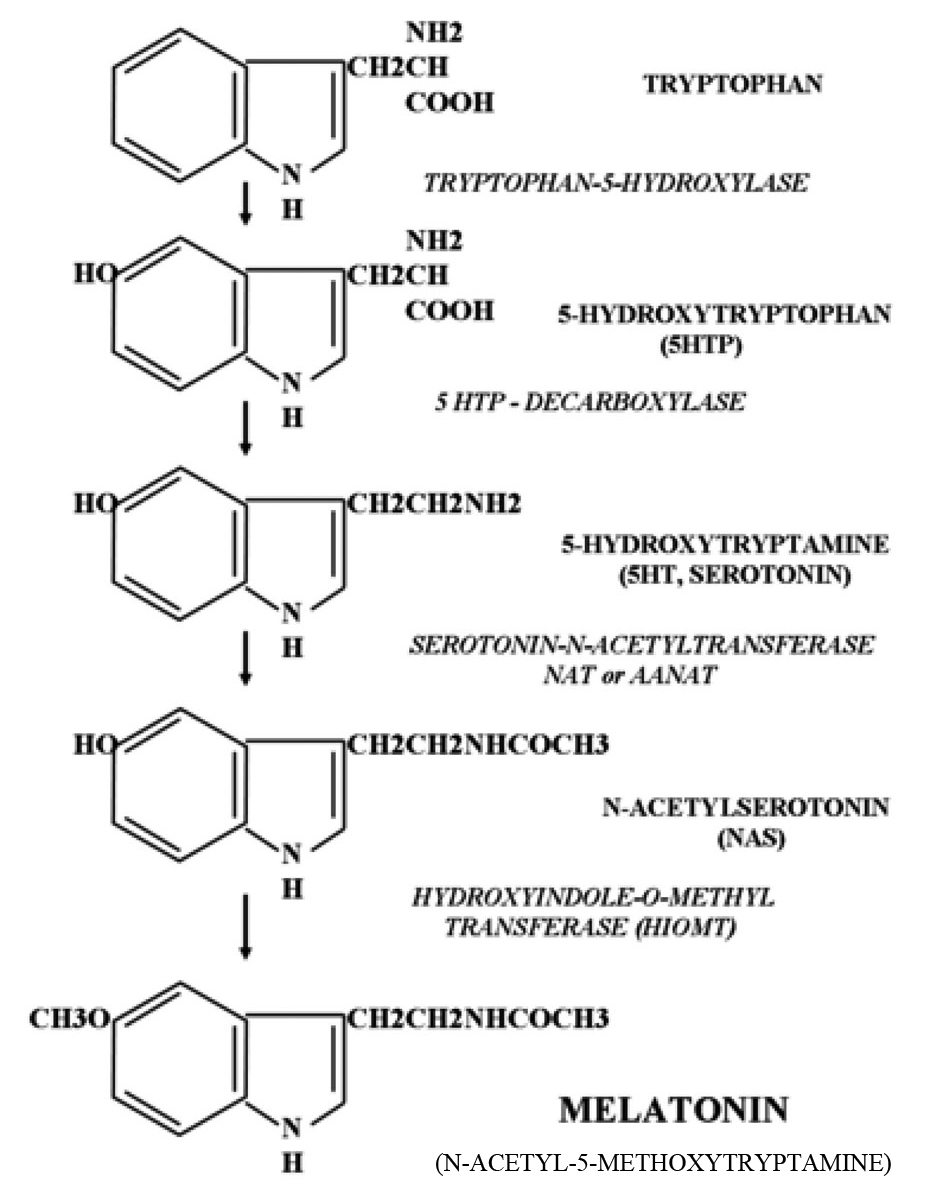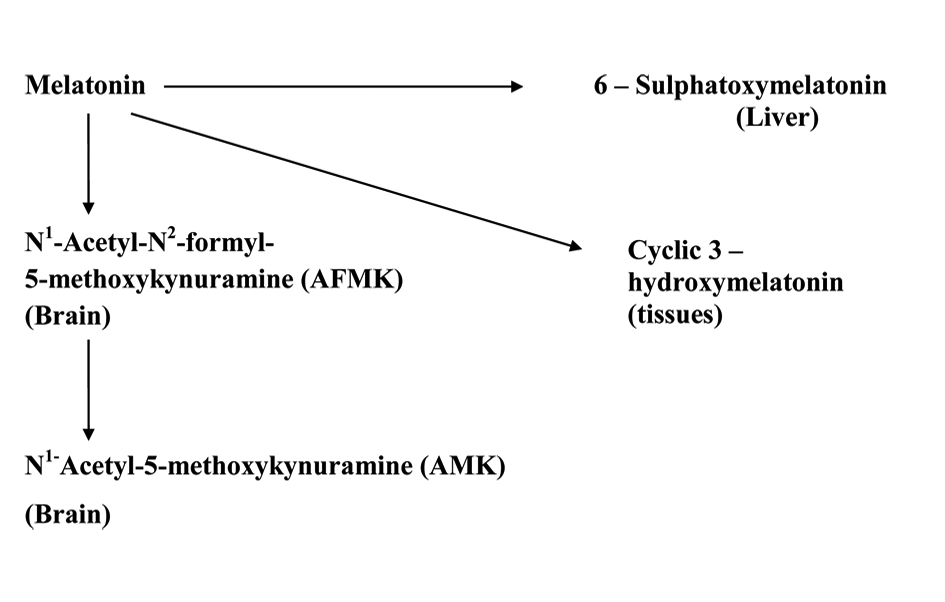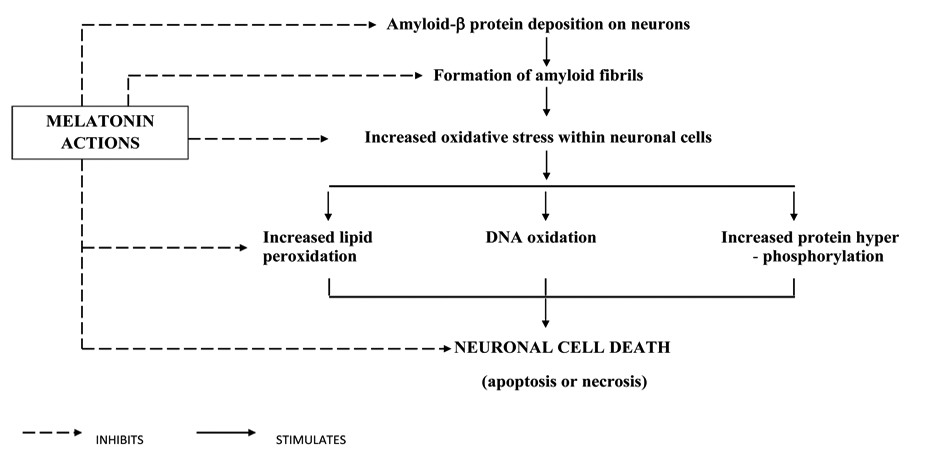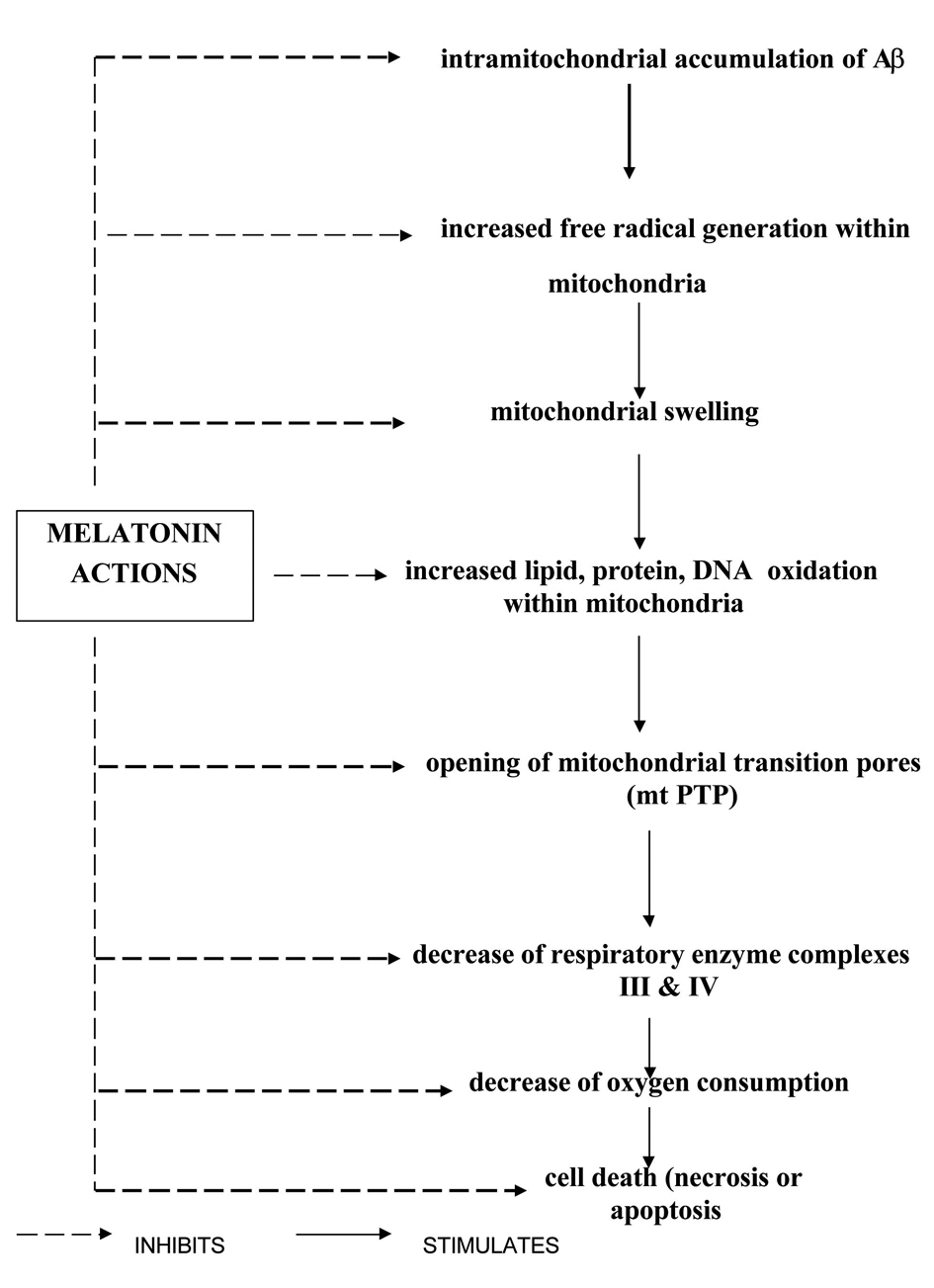
Figure 1. Biosynthesis of melatonin.
| Journal of Neurology Research, ISSN 1923-2845 print, 1923-2853 online, Open Access |
| Article copyright, the authors; Journal compilation copyright, J Neurol Res and Elmer Press Inc |
| Journal website http://www.neurores.org |
Review
Volume 2, Number 3, June 2012, pages 69-81
Alzheimer’s Disease: Focus on the Neuroprotective Role of Melatonin
Figures




Tables
| 1. Inhibition of amyloid-β protein deposition |
| 2. Inhibits the formation of amyloid fibrils |
| 3. Scavenges free radicals induced by amyloid βprotein |
| 4. Inhibits lipid peroxidation reactions in neural tissues |
| 5. Suppresses protein hyperphosphorylation |
| 6. Activates GSK-3 (glycogen synthase kinase) |
| 7. Prevents cytoskeletal disorganization |
| 8. Improves sleep quality in AD patients and may thereby arrest neurodegeneration |
| 1. prevents intramitochondrial effects of amyloid-β effects |
| 2. prevents opening of mitochondrial transition pores |
| 3. increases mitochondrial respiratory enzyme complex activities |
| 4. safeguards electron flow through the electron transport chain |
| 5. increases intramitochondrial GSH pool |
| 6. prevents intramitochondrial lipid peroxidation |
| 7. prevents mitochondrial DNA oxidation |
| 8. increases ATP synthesis |
| 9. prevents cell death by necrotic effects or apoptotic effects |